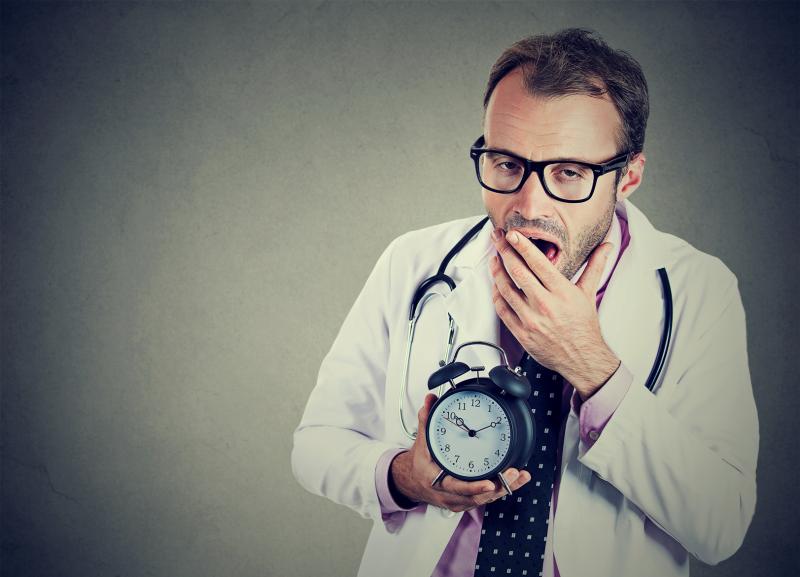 Circadian rhythms and tired doctors – both may affect patient outcomes after surgery.
Circadian rhythms and tired doctors – both may affect patient outcomes after surgery.Irregular sleep duration and timing appears to increase the risk of cardiovascular disease (CVD), independent of sleep quantity or quality and traditional CVD risk factors, suggests a study.
A total of 1,992 individuals free of CVD were included in the Multi-Ethnic Study of Atherosclerosis. Participants completed the 7-day wrist actigraphy for sleep assessment from 2010 to 2013 and were prospectively followed through 2016. Sleep regularity was assessed using the standard deviation (SD) of actigraphy-measured sleep duration and sleep-onset timing across 7 days.
The investigators estimated hazard ratios (HRs) for incident CVD according to SD of sleep duration and timing using a Cox proportional hazards model, adjusted for traditional CVD risk factors (including CVD biomarkers) and other sleep-related factors (including average sleep duration). Incident CVD included fatal and nonfatal cardiovascular events.
CVD events occurred in 111 participants during a median follow-up of 4.9 years. The multivariable-adjusted HRs for CVD across categories of sleep duration SD were as follows: 1.00 (reference) for ≤60 min, 1.09 (95 percent confidence interval [CI], 0.62–1.92) for 61–90 min, 1.59 (95 percent CI, 0.91–2.76) for 91–120 min, and 2.14 (95 percent CI, 1.24–3.68) for >120 min (ptrend=0.002).
Likewise, the HRs for CVD were 1.16 (95 percent CI, 0.64–2.13) for 31–60 min, 1.52 (95 percent CI, 0.81–2.88) for 61–90 min, and 2.11 (95 percent CI, 1.13–3.91) for >90 min (ptrend=0.002) compared with participants with a sleep timing SD ≤30 min.
Results were consistent even after exclusion of current shift workers.
“Irregular sleep schedules, characterized by high day-to-day variability in sleep duration or timing, represent possibly milder but much more common and chronic disruption of circadian rhythms in the general population than shift work,” the investigators said.